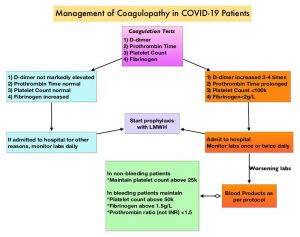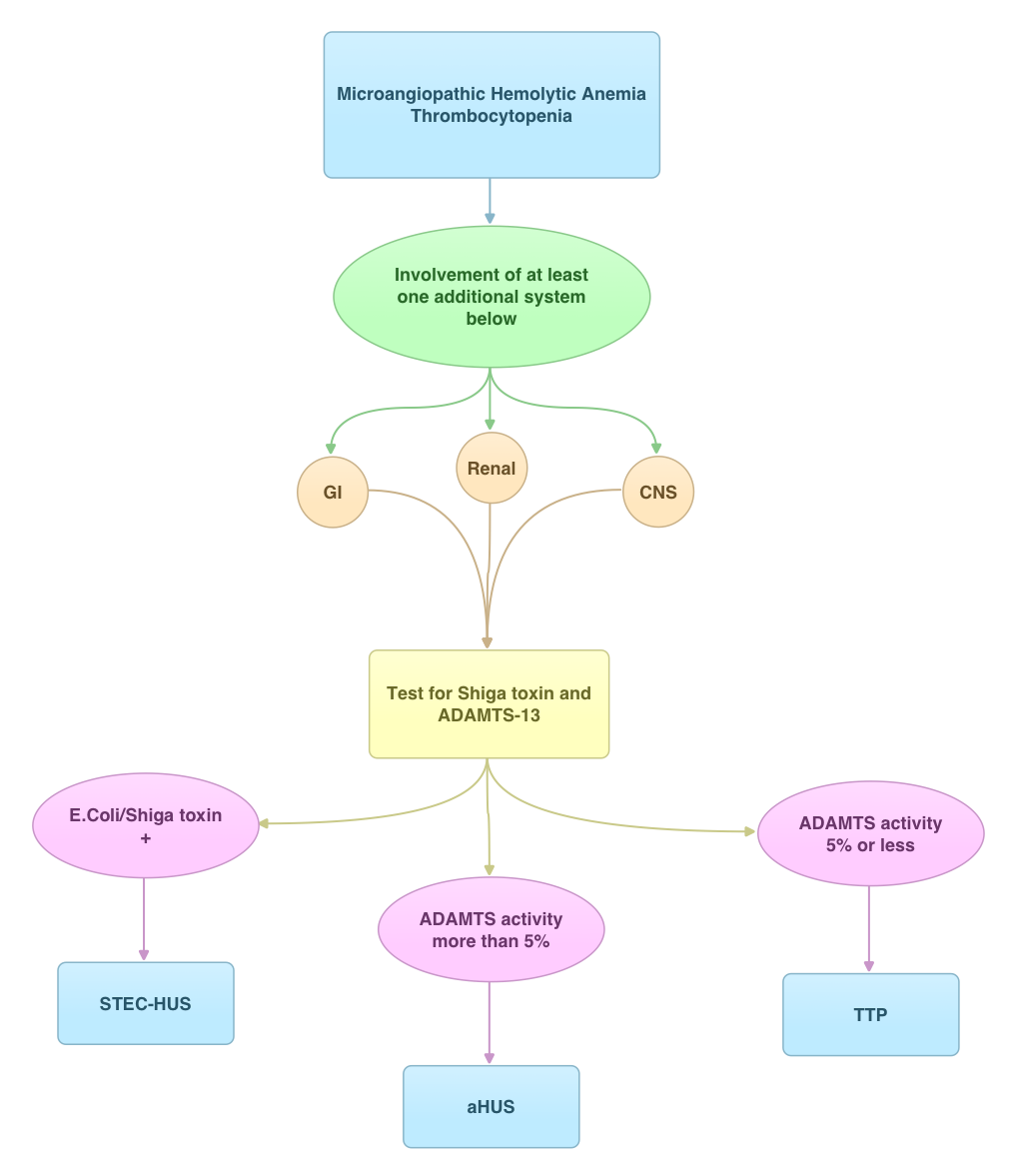SUMMARY: The Center for Disease Control and Prevention (CDC) estimates that approximately 1-2 per 1000 individuals develop Deep Vein Thrombosis (DVT)/Pulmonary Embolism (PE) each year in the United States, resulting in 60,000-100,000 deaths. Venous ThromboEmbolism (VTE) is the third leading cause of cardiovascular mortality, after myocardial infarction and stroke. Ambulatory cancer patients initiating chemotherapy are at varying risk for Venous Thromboembolism (VTE), which in turn can have a substantial effect on health care costs, with negative impact on quality of life.
Approximately 20% of cancer patients develop VTE and about 20% of all VTE cases occur in patients with cancer. There is a two-fold increase in the risk of recurrent thrombosis in patients with cancer, compared with those without cancer, and patients with cancer and VTE are at a markedly increased risk for morbidity and mortality. The high risk of recurrent VTE, as well as bleeding in this patient group, makes anticoagulant treatment challenging.
Since the first publication of a VTE guideline by ASCO in 2007, there have been 3 updates, with the last update in 2023. ASCO convened an Expert Panel to review the evidence and revise previous recommendations as needed. The 2019 guideline update included a systematic review of 35 publications on VTE prophylaxis and treatment, and 18 publications on VTE risk assessment published from August 1, 2014, through December 4, 2018. After publication of five potentially practice-changing randomized clinical trials between November 1, 2018, and June 6, 2022, an updated systematic review was performed by the ASCO Expert Panel for two guideline questions: perioperative thromboprophylaxis and treatment of VTE.
The purpose of this guideline update is to provide updated recommendations about prophylaxis and treatment of venous thromboembolism (VTE) in patients with cancer. The term direct factor Xa inhibitors is used in this update, rather than the previously used direct oral anticoagulants, for increased specificity.
Guideline Question
How should venous thromboembolism (VTE) be prevented and treated in patients with cancer?
CLINICAL QUESTION 1.
Should hospitalized patients with cancer receive anticoagulation for VTE prophylaxis?
Recommendation 1.1.
Hospitalized patients who have active malignancy and acute medical illness or reduced mobility should be offered pharmacologic thromboprophylaxis in the absence of bleeding or other contraindications
Recommendation 1.2.
Hospitalized patients who have active malignancy without additional risk factors may be offered pharmacologic thromboprophylaxis in the absence of bleeding or other contraindications
Recommendation 1.3.
Routine pharmacologic thromboprophylaxis should not be offered to patients admitted for the sole purpose of minor procedures or chemotherapy infusion, nor to patients undergoing stem-cell/bone marrow transplantation
CLINICAL QUESTION 2.
Should ambulatory patients with cancer receive anticoagulation for VTE prophylaxis during systemic chemotherapy?
Recommendation 2.1.
Routine pharmacologic thromboprophylaxis should not be offered to all outpatients with cancer
Recommendation 2.2.
High-risk outpatients with cancer (Khorana score of 2 or higher prior to starting a new systemic chemotherapy regimen) may be offered thromboprophylaxis with apixaban, rivaroxaban, or low-molecular-weight heparin (LMWH) provided there are no significant risk factors for bleeding and no drug interactions. Consideration of such therapy should be accompanied by a discussion with the patient about the relative benefits and harms, drug cost, and duration of prophylaxis in this setting
Recommendation 2.3.
Patients with multiple myeloma receiving thalidomide- or lenalidomide-based regimens with chemotherapy and/or dexamethasone should be offered pharmacologic thromboprophylaxis with either aspirin or LMWH for lower-risk patients and LMWH for higher-risk patients
CLINICAL QUESTION 3.
Should patients with cancer undergoing surgery receive perioperative VTE prophylaxis?
Recommendation 3.1.
All patients with malignant disease undergoing major surgical intervention should be offered pharmacologic thromboprophylaxis with either unfractionated heparin (UFH) or LMWH unless contraindicated because of active bleeding, or high bleeding risk, or other contraindications
Recommendation 3.2.
Prophylaxis should be commenced preoperatively
Recommendation 3.3.
Mechanical methods may be added to pharmacologic thromboprophylaxis but should not be used as monotherapy for VTE prevention unless pharmacologic methods are contraindicated because of active bleeding or high bleeding risk
Recommendation 3.4.
A combined regimen of pharmacologic and mechanical prophylaxis may improve efficacy, especially in the highest-risk patients
Recommendation 3.5.
Pharmacologic thromboprophylaxis for patients undergoing major surgery for cancer should be continued for at least 7 to 10 days.
Recommendation 3.6.
Extended prophylaxis with LMWH for up to 4 weeks postoperatively is recommended for patients undergoing major open or laparoscopic abdominal or pelvic surgery for cancer who have high-risk features, such as restricted mobility, obesity, history of VTE, or with additional risk factors. In lower-risk surgical settings, the decision on appropriate duration of thromboprophylaxis should be made on a case-by-case basis
Recommendation 3.7. (UPDATED ASCO RECOMMENDATION FROM 2023)
Patients who are candidates for extended pharmacologic thromboprophylaxis after surgery may be offered prophylactic doses of low molecular weight heparin (LMWH). Alternatively, patients may be offered prophylactic doses of rivaroxaban or apixaban after an initial period of LMWH or unfractionated heparin (UFH)
Qualifying statement: Evidence for rivaroxaban and apixaban in this setting remains limited. The two available trials differed with respect to type of cancer, type of surgery, and timing of rivaroxaban or apixaban initiation after surgery.
CLINICAL QUESTION 4.
What is the best method for treatment of patients with cancer with established VTE to prevent recurrence?
Recommendation 4.1. (UPDATED ASCO RECOMMENDATION FROM 2023)
Initial anticoagulation may involve LMWH, UFH, fondaparinux, or rivaroxaban. For patients initiating treatment with parenteral anticoagulation, LMWH is preferred over UFH for the initial 5 to 10 days of anticoagulation for the patient with cancer with newly diagnosed VTE who does not have severe renal impairment (defined as creatinine clearance less than 30 mL/min)
Recommendation 4.2. (UPDATED ASCO RECOMMENDATION FROM 2023)
For long-term anticoagulation, LMWH, edoxaban, or rivaroxaban for at least 6 months are preferred because of improved efficacy over vitamin K antagonists (VKAs). VKAs are inferior but may be used if LMWH or direct oral anticoagulants (DOACs) are not accessible. There is an increase in major bleeding risk with DOACs, particularly observed in GI and potentially genitourinary malignancies. Caution with DOACs is also warranted in other settings with high risk for mucosal bleeding. Drug-drug interaction should be checked prior to using a DOAC.
Recommendation 4.3.
Anticoagulation with LMWH, DOACs, or VKAs beyond the initial 6 months should be offered to select patients with active cancer, such as those with metastatic disease or those receiving chemotherapy. Anticoagulation beyond 6 months needs to be assessed on an intermittent basis to ensure a continued favorable risk-benefit profile
Recommendation 4.4.
Based on expert opinion in the absence of randomized trial data, uncertain short-term benefit, and mounting evidence of long-term harm from filters, the insertion of a vena cava filter should not be offered to patients with established or chronic thrombosis (VTE diagnosis more than 4 weeks ago), nor to patients with temporary contraindications to anticoagulant therapy (eg, surgery). There also is no role for filter insertion for primary prevention or prophylaxis of pulmonary embolism (PE) or deep vein thrombosis due to its long-term harm concerns. It may be offered to patients with absolute contraindications to anticoagulant therapy in the acute treatment setting (VTE diagnosis within the past 4 weeks) if the thrombus burden was considered life-threatening. Further research is needed
Recommendation 4.5.
The insertion of a vena cava filter may be offered as an adjunct to anticoagulation in patients with progression of thrombosis (recurrent VTE or extension of existing thrombus) despite optimal anticoagulant therapy. This is based on the panel’s expert opinion given the absence of a survival improvement, a limited short-term benefit, but mounting evidence of the long-term increased risk for VTE
Recommendation 4.6.
For patients with primary or metastatic CNS malignancies and established VTE, anticoagulation as described for other patients with cancer should be offered, although uncertainties remain about choice of agents and selection of patients most likely to benefit
Recommendation 4.7.
Incidental PE and deep vein thrombosis should be treated in the same manner as symptomatic VTE, given their similar clinical outcomes compared with patients with cancer with symptomatic events
Recommendation 4.8.
Treatment of isolated subsegmental PE or splanchnic or visceral vein thrombi diagnosed incidentally should be offered on a case-by-case basis, considering potential benefits and risks of anticoagulation
CLINICAL QUESTION 5.
Should patients with cancer receive anticoagulants in the absence of established VTE to improve survival?
Recommendation 5.
Anticoagulant use is not recommended to improve survival in patients with cancer without VTE
CLINICAL DECISION 6.
What is known about risk prediction and awareness of VTE among patients with cancer?
Recommendation 6.1.
There is substantial variation in risk of VTE between individual patients with cancer and cancer settings. Patients with cancer should be assessed for VTE risk initially and periodically thereafter, particularly when starting systemic antineoplastic therapy or at the time of hospitalization. Individual risk factors, including biomarkers or cancer site, do not reliably identify patients with cancer at high risk of VTE. In the ambulatory setting among patients with solid tumors treated with systemic therapy, risk assessment can be conducted based on a validated risk assessment tool (Khorana score)
Recommendation 6.2.
Oncologists and members of the oncology team should educate patients regarding VTE, particularly in settings that increase risk, such as major surgery, hospitalization, and while receiving systemic antineoplastic therapy
Notes regarding off-label use in guideline recommendations: Apixaban, rivaroxaban, and LMWH have not been US FDA–approved for thromboprophylaxis in outpatients with cancer (recommendation 2.2 for apixaban and rivaroxaban; recommendations 2.2 and 2.3 for LMWH). Dalteparin is the only LMWH with US Food and Drug Administration approval for extended therapy to prevent recurrent thrombosis in patients with cancer (recommendation 4.2).
Venous Thromboembolism Prophylaxis and Treatment in Patients With Cancer: ASCO Guideline Update.Key NS , Khorana AA , Kuderer NM, et al. J Clin Oncol 2023; 41:3063-3071.


